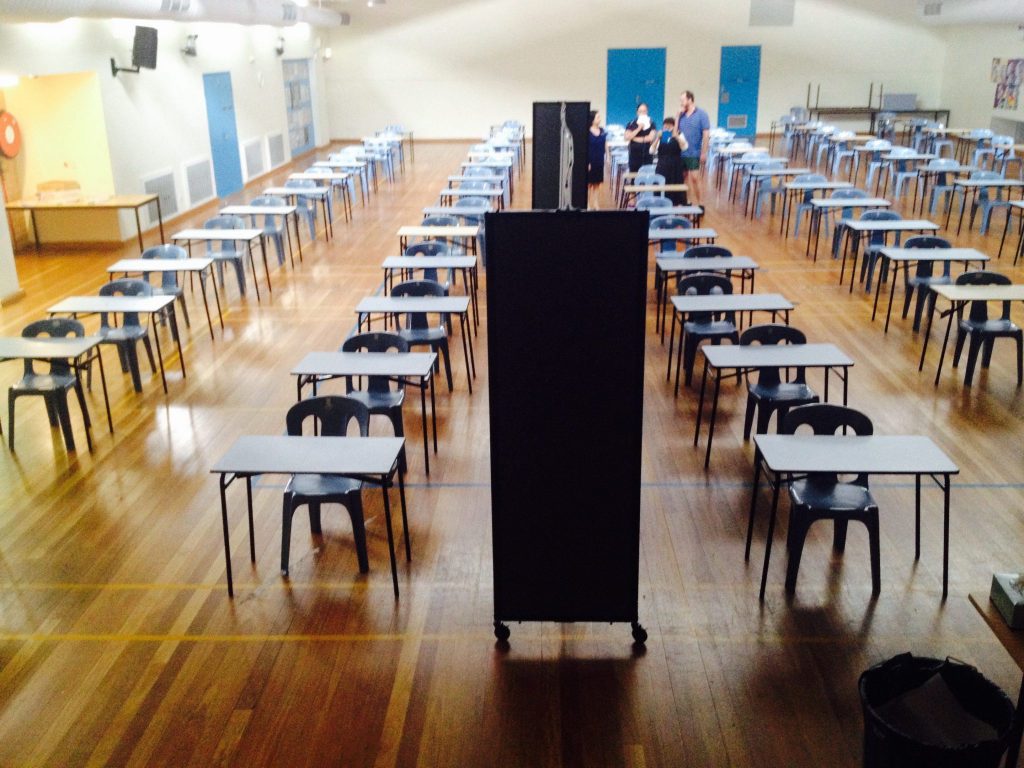Exam week is usually that time in a given school year where students worry – a lot. They are concerned for the most obvious reason – fear of failing an exam, which is naturally good. So they know what they need to do during ‘hell week’ – bury their heads in books and hope to pass the exams in flying colours.
For school administrators, they have to ensure a conducive testing environment for their students – to make the most perfect grid of seating arrangement possible, where chairs are spaced out squarely in between to avoid the naughty few who can’t keep themselves from peering on their seat mate’s test paper, hoping to catch a glimpse of those lingering, forgotten answers to a few familiar exam questions.
In Maronite College of the Holy Family (MCHF) in NSW, their multipurpose hall was converted to become an exam venue. But it was not set-up to hold just one type of exam. The hall was chosen to possibly allow multiple exams of different grade levels to happen at the same time.
From the yearly exams of year 7-10 students and the Prelims of year 11, to the HSC exams for the year 12 graduating students, all their concluding exams for the school year were crammed from October to November.
The challenge of MCHF was how to classify and group together the students in the exam venue so there is a fine line between them and a certain level of distinction.
Maronite College of the Holy Family found a simple but effective way to cluster the students. They decided to go for portable room dividers. The initial idea was to put nothing at all. But having portable room dividers was the better option.
The chosen portable room dividers was the 360 Degree Acoustic Room Divider that has 9 fabric panels. Height is at a decent 2.02m which is just right to do its job of clustering.
The 9 fabric panels of the portable room dividers are tackable and pinnable, which means it can be used for a different purpose such as a mobile art display for students.
The ability of the panels to be configured in a U-shape, L-shape, or curved pattern means it can also be used to create breakout rooms for teacher-student meetings, or for anything similar to that.
Best of all, the portable room dividers are easy to move and store. You simply fold the panels and roll the unit away. Even students can do it.
The ease of use and functionality of portable room dividers like the 360 Degree Acoustic Room Divider are plenty, especially for school application. No doubt it can cluster students during exams. It can divide bigger classrooms and reconfigure it to allow multiple activities. It can even be used as a breakout room for meetings, tutorial sessions, and as private exam rooms for those who needed to take special make-up exams.







